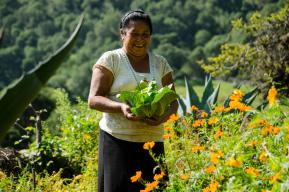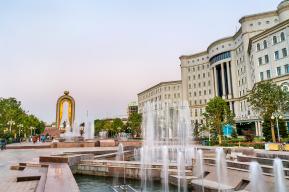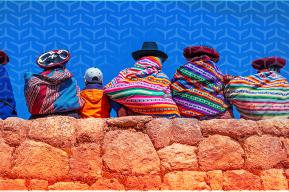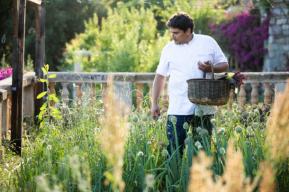Idea
An indigenous solution to deforestation in the Amazon

By Liz Kimbrough
“If the forest is still standing, it is thanks to the presence of indigenous peoples. And today, this is the most important mission of our planet. Because it is a mission that not only guarantees our lives but guarantees the lives of all people,” Txai Suruí, activist of the Paiter Suruí people and coordinator of the Indigenous youth movement of Rondônia, Brazil, said in a recent statement.
She is part of the global movement that calls for all indigenous territories in the Amazon, particularly in Brazil, to be officially recognized by the government, a process known as demarcation.
The principle of demarcation (demarcaçao), laid down in the Brazilian Constitution of 1988, establishes the rights of indigenous peoples to the lands that they have traditionally occupied.
The traditional practices of indigenous peoples promote sustainable forest management – these groups do not typically practice extensive cattle ranching or use large machines. Although indigenous peoples comprise only five per cent of the world's population, they protect 80 per cent of global biodiversity, and the world’s healthiest tropical forests are located in protected indigenous areas.
Although indigenous peoples comprise only 5% of the world's population, they protect 80% of global biodiversity
Between 1990 and 2020, indigenous lands recognized by the government in Brazil experienced only a one per cent loss of their native vegetation, twenty times less than in private areas, according to data from research collective MapBiomas. Another report by Monitoring of the Andean Amazon Project (MAAP) showed, in March 2023, that protected areas and indigenous territories in the Amazon rainforest experienced just one-third the amount of primary forest loss as non-protected areas.
Protected areas and indigenous territories in the Amazon rainforest experienced just one-third the amount of primary forest loss as non-protected areas
Prior consultation
“To say that land is indigenous land is to say that on that land, no mining is allowed, no individual private property is allowed, and everything that affects that land will need to go through the process of free prior and informed consultation and consent with indigenous peoples,” Ana Carolina Alfinito, a Legal Advisor for the United States-based NGO Amazon Watch, says.
The demarcation process in Brazil, where most of the Amazon lies, is long and involved. After the indigenous group submits a report that attests that the land is traditionally held or is necessary for their people to live according to their forms of life, approvals are needed from the President of the National Foundation for Indigenous Peoples (FUNAI), and by the newly created Ministry of Indigenous Peoples. Finally, the process is validated by the President of Brazil.
After demarcation comes the most difficult part: removing the non-indigenous occupants from the land and ensuring that the land will be available for the indigenous peoples to whom it belongs. This process can be long, complicated and violent.
Small victories
Brazil currently has 733 indigenous territories, of which the government recognizes 496. The remaining 237 are in different stages of the demarcation procedure.
“These victories, these formal steps in recognizing the traditional character of the land are important,” Alfinito says, “but this is a continuous and permanent battle.”
It’s important to remember that demarcation doesn't create anything new but rather officially recognizes the rights of indigenous people to their land that already exist.
Indigenous lands, even those that are officially recognized, face various problems. Nearly 10 per cent of the officially demarcated lands do not have the protection guaranteed by the constitution; these lands are affected by various issues, including overlapping claims, invasions, land seizures, and illegal activities like mining, logging and drug trafficking.
“We will continue monitoring our lands while they continue to attack us,” says Maria Leusa Munduruku, leader of the Munduruku people. “It doesn’t matter if the territory is demarcated or not, the territory is ours!”
Liz Kimbrough
Journalist for Mongabay, a nonprofit conservation and environmental science news platform based in the United States










